Input interpretation

11-(2, 2-dimethylpropyl)heneicosane
Chemical names and formulas
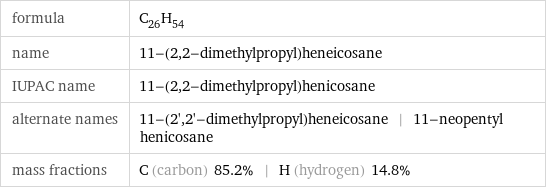
formula | C_26H_54 name | 11-(2, 2-dimethylpropyl)heneicosane IUPAC name | 11-(2, 2-dimethylpropyl)henicosane alternate names | 11-(2', 2'-dimethylpropyl)heneicosane | 11-neopentyl henicosane mass fractions | C (carbon) 85.2% | H (hydrogen) 14.8%
Lewis structure

Draw the Lewis structure of 11-(2, 2-dimethylpropyl)heneicosane. Start by drawing the overall structure of the molecule: Count the total valence electrons of the carbon (n_C, val = 4) and hydrogen (n_H, val = 1) atoms: 26 n_C, val + 54 n_H, val = 158 Calculate the number of electrons needed to completely fill the valence shells for carbon (n_C, full = 8) and hydrogen (n_H, full = 2): 26 n_C, full + 54 n_H, full = 316 Subtracting these two numbers shows that 316 - 158 = 158 bonding electrons are needed. Each bond has two electrons, so the above diagram has all the necessary bonds. There are 79 bonds and hence 158 bonding electrons in the diagram. Lastly, fill in the remaining unbonded electrons on each atom. In total, there remain 158 - 158 = 0 electrons left to draw and the diagram is complete: Answer: | |
3D structure
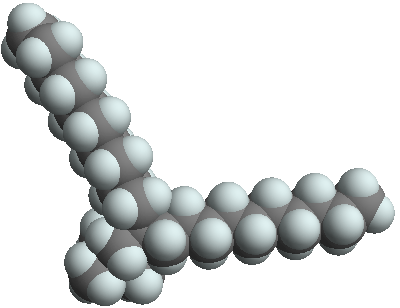
3D structure
Basic properties
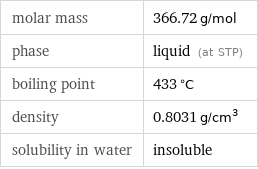
molar mass | 366.72 g/mol phase | liquid (at STP) boiling point | 433 °C density | 0.8031 g/cm^3 solubility in water | insoluble
Units

Liquid properties (at STP)
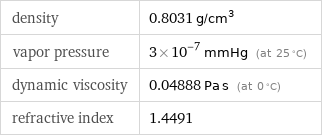
density | 0.8031 g/cm^3 vapor pressure | 3×10^-7 mmHg (at 25 °C) dynamic viscosity | 0.04888 Pa s (at 0 °C) refractive index | 1.4491
Units

Thermodynamic properties

molar heat of vaporization | 66.2 kJ/mol specific heat of vaporization | 0.181 kJ/g (at STP)
Chemical identifiers
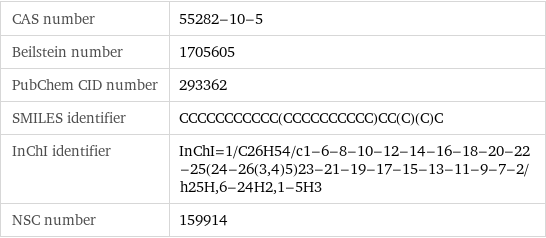
CAS number | 55282-10-5 Beilstein number | 1705605 PubChem CID number | 293362 SMILES identifier | CCCCCCCCCCC(CCCCCCCCCC)CC(C)(C)C InChI identifier | InChI=1/C26H54/c1-6-8-10-12-14-16-18-20-22-25(24-26(3, 4)5)23-21-19-17-15-13-11-9-7-2/h25H, 6-24H2, 1-5H3 NSC number | 159914
Safety properties

flash point | 212 °C

DOT hazard class | 3 DOT numbers | 3295